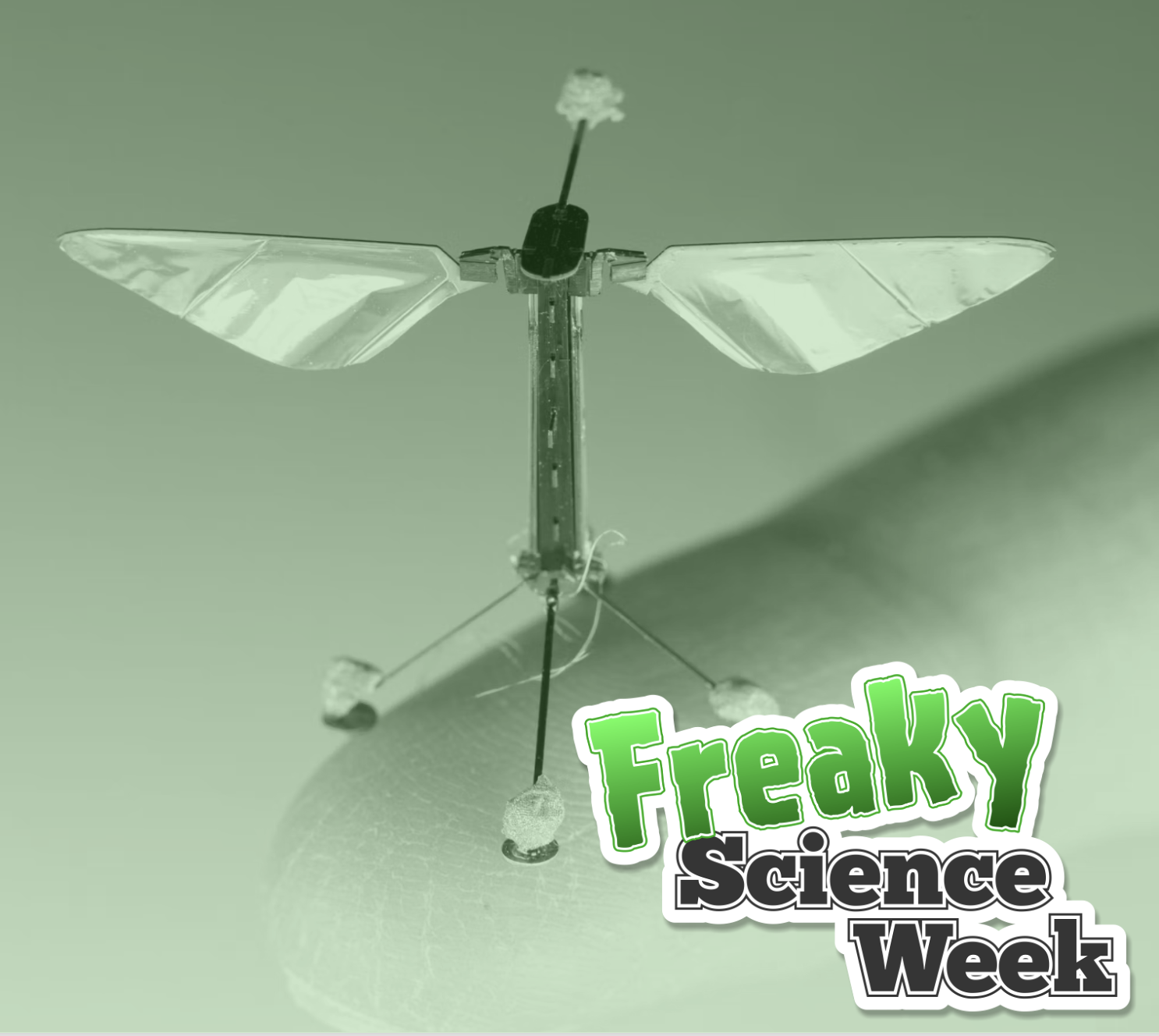Flight of the RoboBee
That's right, "RoboBee."

This week, Questionist asks and answers the question, “What have scientists been up to lately that should scare the bejeezus out of us?” Yesterday we covered in-vitro gametogenesis – the artificial creation of sperm and egg cells – and after today we’ll have three more of these. Sleep tight!
This July, when Scientific American straightforwardly proclaimed that ‘Robotic bees could support vertical farms today and astronauts tomorrow,’ there was a lot to unpack.
“Astronauts” we’ve understood since we were little. “Vertical farms,” as it turns out, are big ol’ greenhouses where vegetables are grown hydroponically in towers up to 30 feet high – essentially jumped-up versions of those countertop herb gardens that Lifehacker is always trying to sell us. Sounds useful, especially as Earth’s human population keeps climbing.
But then there’s “robotic bees.” RoboBees. “To solve the problem” of efficient pollination in these multi-story farms, the article said, “researchers have been working on robotic pollinators for a decade.”
Word?
We had to find out, if only so we could be forewarned. These things probably don’t have stingers, we figured (hoped?), but that doesn’t mean they can’t swarm in our faces as a prelude to an attack by some other sentient robotic creature – a RoboPanther, maybe.
So indeed, RobotsGuide.com tells us that Harvard researchers created the first RoboBees all the way back in 2009. The site reassuringly shows us a video of an “uncontrolled takeoff” that consists of one of these little bugs, smaller than a quarter, doing a half-flip and crashing right onto its robonoggin. Hooray, they’re dumb! We’re safe!
But we wouldn’t be for long. By 2016, the ersatz insects had developed the ability to scan their environment with lasers – you know, like in every sci-fi thriller ever. By 2018, they could stick to surfaces, and dive and swim underwater. In 2019, Harvard’s Wyss Institute reported they had built a version that’s powered by “soft muscles.” Then, a BBC Earth Lab video from this spring reported that the bees can now “fly in all directions, detect and avoid predators, flip 360 degrees,” and “identify specific flowers to pollinate.”
Okay, that last thing sounds actually useful. But still, it’s a lot – and one of the cons listed in BuiltIn.com’s great explainer from this September is that RoboBees could become an “invasive species” in some environments. (Again, we’re envisioning that face swarm.) But probably the most ominous development of all from this steady 14-year … er, drone of news? In 2018, a RoboBee model was patented by Walmart. Yes, that Walmart. Maybe they want to sic ‘em on the objects of another patent: ‘Systems and methods for identifying potential shoplifting incidents.’
After all this vaguely cool, vaguely horrifying news, the only thing that could calm us down was circling back to Scientific American, and its hopeful observation that RoboBees might soon help astronauts. Remembering the great difficulty Matt Damon had in growing potatoes on Mars in that one documentary, we know that extraterrestrial agriculturists can use all the help they can get – and sure enough, that’s what the robo-builders have in mind. “While scientists already plan to bring living insects to space to work as pollinators and to eat waste, the insects’ metal counterparts would likely live longer,” the article insists. “Astronauts could even 3D-print these tools off-planet.” How nice!
But oh, yeah, wait – so now we’re talking about swarms of AI-controlled robotic bees on a spaceship? We think we’ve seen that movie too.
Photo illustration: Wyss Institute / Questionist
